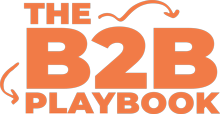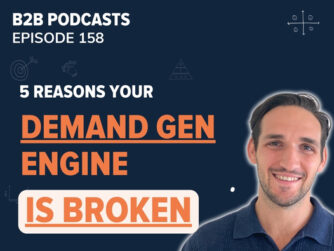As demand generation marketers, one of the biggest challenges we face is justifying the impact and ROI of our activities to executives, sales teams, and other stakeholders. It’s a constant battle to prove that the content, campaigns, and programs we put out into the world are actually moving the needle for the business.
The good news? We’ve got a battle-tested 3 tiered framework for measuring demand generation, so you can justify your actions and stay on course – even before real pipeline and revenue starts flowing in.
It takes you from:
- “Hey, we’re starting to see signs of life from our demand gen activities” (Tier 3)
- “Our activities are driving pipeline for the business” (Tier 2)
- “Our demand gen strategy is clearly driving revenue for the business” (Tier 1)
This is part of our Demand Gen mini-series. You can access the full series and their whiteboarding sessions here:
- What is demand generation? (part 1)
- When is the right time to start demand generation? (part 2)
- What companies are suited to demand generation? (part 3)
- How to build a winning business case for demand generation? (part 4)
- 10 questions to decide if you should build a new demand gen strategy (part 5)
- 5 steps to transition from lead gen to demand gen (part 6)
- Our B2B Demand Generation framework, The 5 BEs (part 7)
- Content That Generates Demand (part 8)
- Budgeting for Demand Gen – creation vs capture (part 9)
- Demand Generation KPIs (part 10)
- B2B Demand Generation Marketing Tech Stack (part 11)
- An introduction to Sales & Marketing Working Together (part 12)
- Our Sales & Marketing Alignment Workbook (part 13)
- Build Your Demand Generation Engine in our 12 Week Course
As per usual, you can read, watch or listen below to work through our 3 tiered guide to measuring demand generation (and its KPIs).
This is just a highlight of what we cover in our 12 Week Demand Generation Course – The B2B Incubator.
Listen To The Episode
This episode is sponsored by Leadfeeder. Know EXACTLY who is coming to your website, convert more leads and get a free trial at Leadfeeder.com.
➡️Grab your Leadfeeder extended premium trial here
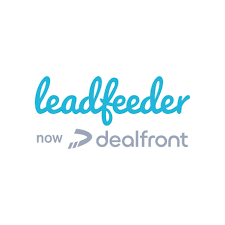
Watch The Episode
Our 3 Tiered Measurement System
We’ve developed this 3 tiered system of measurement as demand gen practitioners who have had to justify their activities to other stakeholders like leadership and sales.
One of the greatest killers of demand gen programs is not being bale to prove their worth – particularly in their early days. That’s why we recommend you start measuring at Tier 3 when you launch your demand gen program, and over time more to Tiers 2 and Tier 1. Tier 1 is for a mature demand generation program, that’s been running for about 1.5-2x your average sales cycle length.
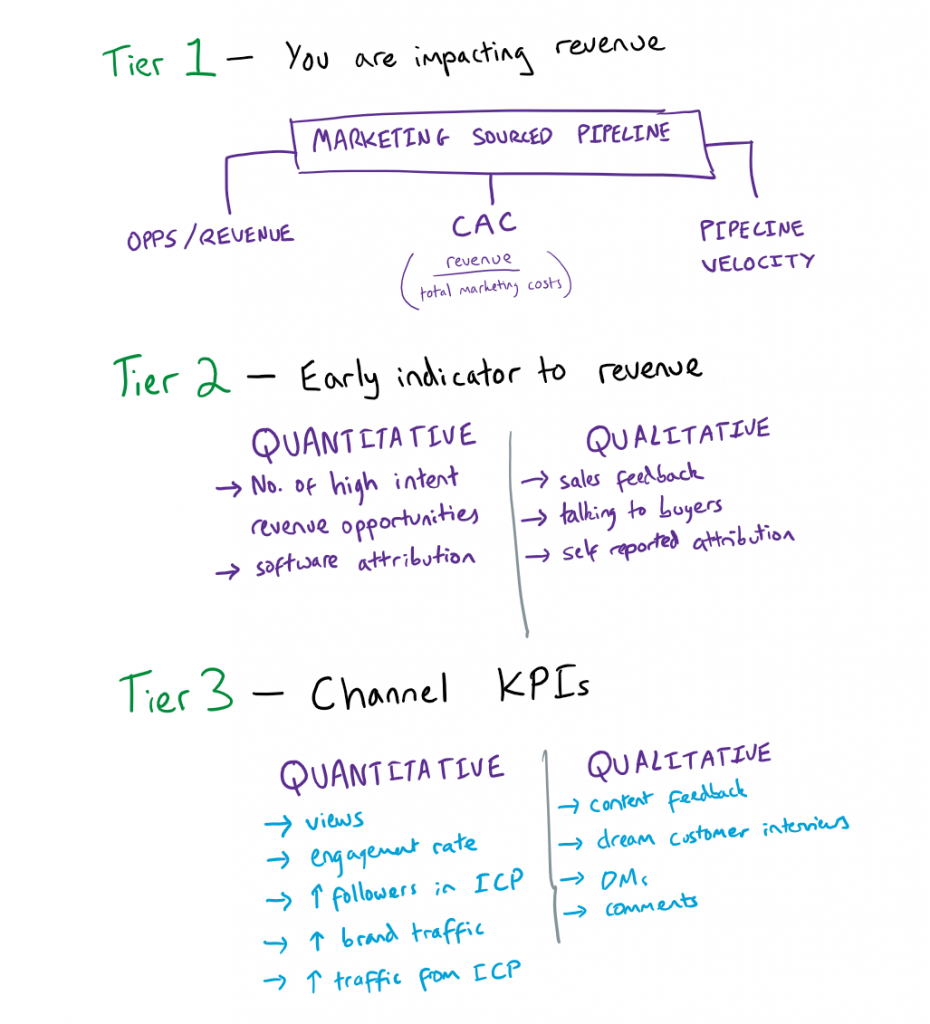
For each tier we like to break down the measurements in to quantitative and qualitative data. In our experience, many marketers like to rely on quantitative data (which tells you ‘what’ happened), and rarely fight to get the ‘qualitative data’ (which tells you ‘why’ something happened).
The qualitative data is particularly useful in making sure you stay on track with your demand gen programs, and that you don’t quit on them too early!
Okay, let’s get into the 3 tiers!
Please note, we have a detailed guide on measuring demand gen and demand gen KPIs here too.
Tier 3: Early Signs of Traction (Channel KPIs)
When you first launch a new demand generation campaign, those initial quantitative metrics are crucial for validating that you’re on the right track. This is where you’re looking for signs of life that this particular campaign is actually having a positive impact on your market.

The quantitative data to watch in Tier 3 includes:
- Increased views and engagement from your ICP on your channels where you’re reaching them (for example, LinkedIn). This can include: collective views on your company LinkedIn page posts, employee advocate posts from SMEs
- Engagement rates like clicks, comments, LinkedIn reactions, how far people scroll on your landing pages
- New followers for your company and employee pages, particularly from accounts that fit your ICP
- Which specific companies are viewing your LinkedIn content
- Website traffic coming from your ICP accounts
But the quantitative stats only tell part of the story. The qualitative signals are just as important for validating those early promising signs. They can include:
- Customers mentioning your content in sales conversations
- Employees or SMEs receiving DMs praising and reacting to your content
- Your ICP commenting on and sharing your posts
We tend to check our Tier 3 metrics almost every morning as the first thing we do.
Tier 2: Early Indicators to Revenue (Pipeline Growth)
Once you’ve validated those early positive signals in Tier 3, it’s time to level up to Tier 2 metrics focused on pipeline growth. This is where you should start seeing your demand gen efforts translating into tangible sales opportunities.
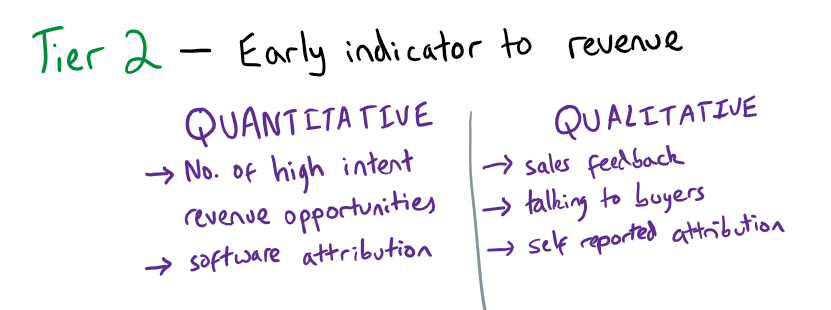
The key quantitative measure here is what we call ‘HIRO Pipeline’. HIRO stands for high-intent revenue opportunity. It’s really just a fancy acronym for saying – look at a stage in your Deal Pipeline that typically closes at 25% or more. And the goal is to increase those number of deals that get to that stage.
This is a great metric to optimise to as it forces you to focus on quality, not just quantity.
On the qualitative side, consistent communication with your sales team is critical. Gather continuous feedback on:
- The quality of the opportunities flowing in from marketing
- Whether prospects are more educated on your solution by the time they reach sales conversations
- Direct quotes from buyers citing how your content influenced their buyer journey
You need to get sales to make it part of their discovery to ask what brought the customer to your business in the first place – or how did they hear about you – or what made them decide that now was the right time to reach out. This is where customers will recount touchpoints from your demand gen efforts, and validate that you should continue to do those things as it played a key role in their buying journey.
If we’d gone off our CRM data alone, most pipeline is attributed to ‘Organic’ or ‘Direct’ efforts. Reading into that alone would have led us to pour a lot of resources into SEO, and cancel our podcast. But when you look at the self-reported attribution, we found that most are listeners of the podcast or follow content that derives from it on LinkedIn.
Which leads us to a powerful but often overlooked piece of qualitative data – self-reported attribution. Whenever a prospect fills out a form, ask the simple question:
“How did you first hear about us? It should be a mandatory open text field. It forces your dream customers to recall the touch point that had the most impact on them.
We look at Tier 2 metrics every 1-2 weeks to make sure we’re moving in the right direction.
Tier 1 – Marketing Contributing To Revenue
This is the big one – the metrics that truly showcase marketing’s ability to drive revenue and impact the bottom line. When you’ve built up enough data from Tiers 3 and 2, it’s time to graduate to Tier 1 KPIs that executives and the revenue team care most about.

It’s what shows that marketing is helping drive the business forward.
The prime metric to track here is marketing’s influence on pipeline and closed revenue. Depending on your sales cycle complexity, this could mean focusing more on marketing-sourced opportunities from your website. Or if guided by sales, zeroing in on your influencer metrics across all opportunities.
As a general rule, the more simple and cheaper the product is that you’re selling, the more ability marketing ultimately has to move a prospect from being a dream customer to a very real opportunity. The more expensive it is, the more coordinated the effort is going to have to be between sales and marketing to turn interest into pipeline opportunity.
You’ll also want to calculate customer acquisition cost while factoring in content creation, advertising spend, marketing technology fees, and even sales team time required to work those marketing-sourced leads.
But perhaps the most powerful Tier 1 KPI is pipeline velocity – measuring the precise speed at which your joint marketing and sales efforts are moving prospects through the funnel.
Action Steps
Hopefully at this stage the path forward is clear:
- Start with Tier 3 metrics to validate early traction
- Move to Tier 2 to show pipeline growth and alignment with sales
- Ultimately aim for Tier 1 metrics to prove marketing’s impact on revenue
Stay close to your sales team to make sure you get the insights you need to optimize your Demand Gen program as it develops.
Want more Demand Generation resources?
We give you the strategy, templates and tools for Demand Generation – and force you to build yours in 12 weeks. Check out why B2B marketers like you love our demand gen program here.
